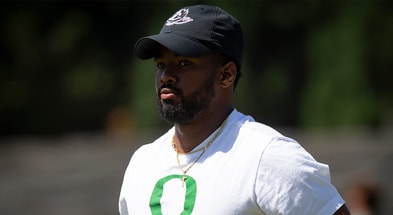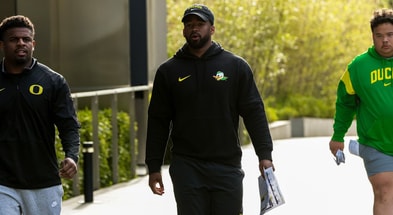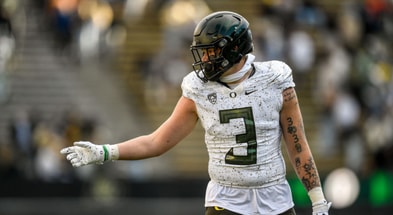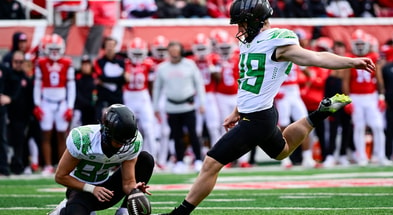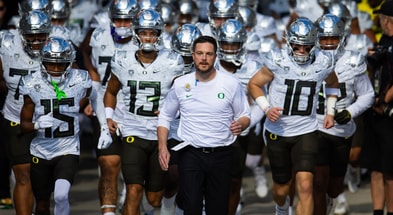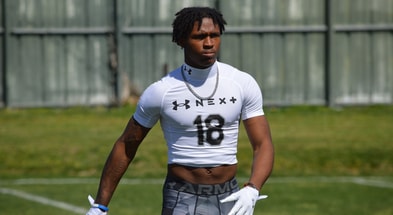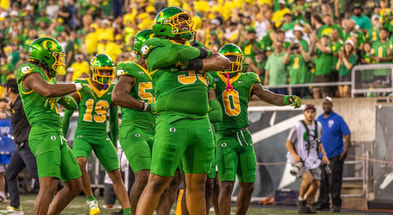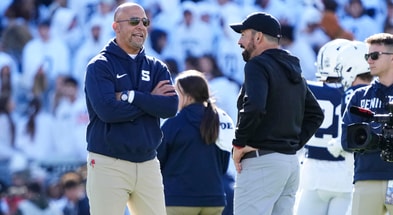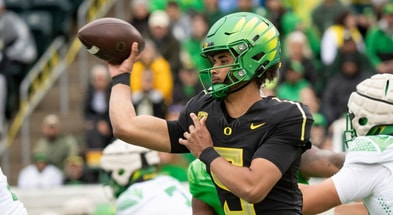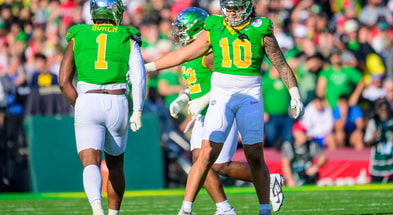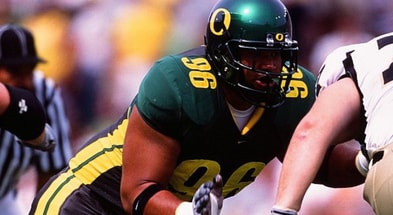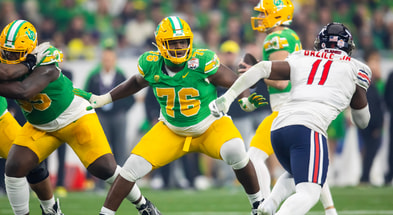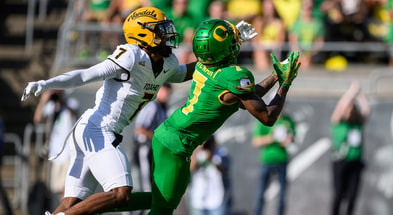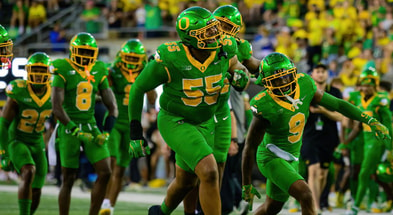What conference alliance means for Oregon

Early Tuesday, commissioners from the Pac-12, Big-Ten and ACC gathered for a press conference and announced an unprecedented alliance among the three conferences.
What exactly does that mean?
Well, those details may take awhile to unpack.
In a press release, the three conferences said the alliance will “bring 41 world-class institutions together on a collaborative approach surrounding the future evolution of college athletics and scheduling.”
According to the press release, the three conferences will remain competitive with one another, but are collaborating to specifically address:
- Student-athlete mental and physical health, safety, wellness and support
- Strong academic experience and support
- Diversity, equity and inclusion
- Social justice
- Gender equity
- Future structure of the NCAA
- Federal legislative efforts
- Postseason championships and future formats
How exactly this effects the 41 member schools will take months, and possibly years, to completely unfold.
Pac-12 commissioner George Kliavkoff, ACC commissioner Jim Phillips and Big 10 commissioner Kevin Warren held a nearly hour-long press conference today that was short on substance, but did provide a few details.
Here is what we know so far, and how it might directly effect Oregon’s athletic programs.
Potential premiere matchups
One thing the three commissioners did make clear Tuesday is that the alliance will pave the way for more seamless scheduling between teams in the three conferences.
Oregon traveling to Beaver Stadium for a showdown with Penn State? Clemson coming to Autzen in early September? It could all be on the table.
Per the press release: “The alliance includes a scheduling component for football and women’s and men’s basketball designed to create new inter-conference games, enhance opportunities for student-athletes, and optimize the college athletics experience for both student-athletes and fans across the country. The scheduling alliance will begin as soon as practical while honoring current contractual obligations.”
Some spectacular cross-conference matchups could be coming. But not until currently scheduled matchups are fulfilled.
Which brings us to…
Oregon’s non-conference opponents
If the three commissioners are to be taken at their word, all non-conference matchups that teams for the three conferences have scheduled for future seasons will be honored.
For Oregon, here’s what that looks like.
2022
- Georgia (neutral site)
- Eastern Washington
- BYU
2023
- Portland State
- @ Texas Tech
- Hawaii
2024
- Idaho
- Texas Tech
- Boise State
- @ Hawaii
2025
- Montana State
- Oklahoma State
- @ Boise State
2026
- Boise State
- @ Oklahoma State
- Portland State
2027
- @ Baylor
- Utah State
2028
- North Dakota State
- Baylor
- @ Utah State
Long story short, those games aren’t going anywhere. The alliance is not going to blow up any of the current non-conference contracts.
Which means for many programs, including Oregon, the alliance will have no great effect on out-of-conference scheduling for nearly a decade.
According to Max Olson of The Athletic, Kliavkoff said the Pac-12 will announce its decision on whether or not it intends to expand before the end of this week.
The alliance has not reached a unified decision on whether member schools will drop down to a schedule that features just eight conference games.
“Those are the kind of issues that we’ll be dealing with over the next weeks, months to years as we look forward to building the scheduling alliance together,” Warren said.
“We have a contractual commitment through the end of our media rights term to play nine conference games,” Kliavkoff added. “So to move to fewer games sooner than three years, we would need to have partnership with ESPN and FOX to do that. Although I think there’s a compelling argument that the games that we could replace those with — if they were in the alliance — wold be very compelling and worth making that move sooner. We’ll work through that with our media partners and our alliance partners.”
Top 10
- 1
SEC victory lap
Super Bowl billboards a bold touch
- 2New
Greg Sankey
Calls for CFP change
- 3
Ryan Day picks OC
Brian Hartline promoted at Ohio State
- 4Hot
Brian Kelly responds
Greg Brooks Jr. allegation amid lawsuit
- 5
Jalen Milroe
'You don't ask a zebra to be a dog'
Get the On3 Top 10 to your inbox every morning
By clicking "Subscribe to Newsletter", I agree to On3's Privacy Notice, Terms, and use of my personal information described therein.
What UO is saying
While the trio of conference commissioners held their press conference Tuesday, Mario Cristobal and his squad were working away at practice.
When Cristobal met with reporters afterward, he fielded a few questions about what he thinks the alliance means for his program.
“We schedule ambitiously all the time,” Cristobal said. “We’re blessed to have a very powerful brand. I think anytime a landscape moves like it’s been moving opportunities like this — to be in an alliance with such prominent programs and conferences and what not — it’s just another opportunity to get our brand out there and elevate it that much more.
“I know that just think abut it, you’re looking at a lot of opportunities — possibly in places where there’s a lot of Oregon Ducks. We’ve got Ducks all over the country and this looks like a tremendous opportunity to expand our footprint.”
As for whether he would support a move to a an eight-game conference slate, Cristobal admitted that he hasn’t thought that far ahead.
“I know that in the moments that we’ve had to meet as a conference and with our new commissioner, every single person walked out of those meetings very enthused and very excited and very confident that we’re going to be in a great position,” Cristobal said.
Oregon president Michael Schill, who is also chair of the Pac-12 CEO group, released a statement voicing support for the alliance.
“The Pac-12 is thrilled to to join with so many world-class universities in a collaborative effort to support our student athletes through an unwavering commitment to excellence in academic and athletics,” Schill said in the statement. “Together, we can help shape a future for college athletics where broad-based athletic programs in concert with education opportunities allow us to support the next generation of leaders.”
Oregon athletic director Rob Mullens spoke on John Canzano’s radio show Tuesday and indicated that the formation of the alliance was spurred by Texas and Oklahoma’s decision to leave the Big-12.
“I don’t think there’s any doubts that the Texas and Oklahoma moves caused everybody to elevate the landscape,” Mullens said.

